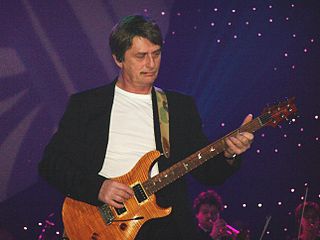
Michael Gordon Oldfield is an English musician, songwriter, and producer best known for his debut studio album Tubular Bells (1973), which became an unexpected critical and commercial success. Though primarily a guitarist, Oldfield plays a range of instruments, which includes keyboards, percussion, and vocals. He has adopted a range of musical styles throughout his career, including progressive rock, world, folk, classical, electronic, ambient, and new age music.
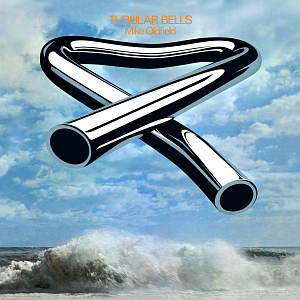
Tubular Bells is the debut studio album by the British musician Mike Oldfield, released on 25 May 1973 as the first album on Virgin Records. It comprises two mostly instrumental tracks. Oldfield, who was 19 years old when it was recorded, played almost all the instruments.

Tubular Bells II is the fifteenth studio album by English guitarist and songwriter Mike Oldfield. It was released on 31 August 1992 by Warner Music UK and is the successor to his debut album Tubular Bells (1973). After his contract with Virgin Records ended at the end of 1991, Oldfield signed with Warner and started work on a sequel to Tubular Bells. The album charted at number 1 in the UK as did its precursor. It is Oldfield's third number-one album.

Hergest Ridge is the second studio album by English musician and songwriter Mike Oldfield, released on 2 September 1974 by Virgin Records. The unexpected commercial and critical success of his debut album, Tubular Bells (1973), affected Oldfield, who decided against touring and avoided the press with his newfound fame. Instead, he retreated to Hergest Ridge on the England–Wales border and wrote the follow-up, which he recorded in 1974 at The Manor in Oxfordshire, with Tom Newman returning as co-producer. Similar to Oldfield's first, the album is a single composition split into two parts covering different moods and musical styles.

Ommadawn is the third studio album by English musician, multi-instrumentalist and songwriter Mike Oldfield, released on 3 November 1975 on Virgin Records.

Incantations is the fourth studio album by English musician, songwriter, and producer Mike Oldfield, released on 1 December 1978 by Virgin Records. Following the release of his previous album Ommadawn (1975), Oldfield moved into a new home in Bisley, Gloucestershire, where he set up a new recording studio. He started on a follow-up in 1977 which took form as a double album with one, side-long track on each side of the LP record. Oldfield wished to use real incantations in the music, but ended up using folklore as a loose running theme, such as Dianna the Huntress. Though primarily instrumental, lyrical sections are adapted from works by poets Henry Longfellow and Ben Jonson. Oldfield completed the self-awareness seminar Exegesis while recording Incantations.
Jabula was a musical ensemble of South African musicians exiled in England during the Apartheid era, led by Julian Bahula.

Platinum is the fifth studio album by English multi-instrumentalist and songwriter Mike Oldfield, released on 23 November 1979 on Virgin Records. It was Oldfield's first album to include shorter songs and music written by others. A modified version of the album was released in the United States and Canada and titled Airborn.
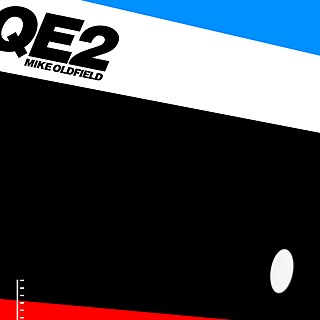
QE2 is the sixth studio album by Mike Oldfield, released in 1980 on Virgin Records. The album was named after the ocean liner Queen Elizabeth 2.

Five Miles Out is the seventh studio album by English recording artist Mike Oldfield, released on 19 March 1982 by Virgin Records in the UK. After touring in support of his previous album, QE2 (1980), ended in mid-1981, Oldfield started on a follow-up with members of his touring band performing the music. The album features the 24-minute track "Taurus II" on side one and four shorter songs on side two. The songs "Family Man" and "Orabidoo" are credited to Oldfield and members of his touring band which included vocalist Maggie Reilly, drummer Morris Pert, and guitarist Rick Fenn.

Voyager is the 17th music album by Mike Oldfield, released in 1996 by Warner Music UK. It is a Celtic-themed album with new compositions intertwined with traditional pieces.
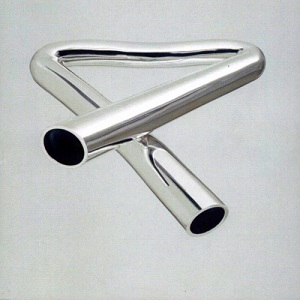
Tubular Bells III is the eighteenth studio album by English guitarist, songwriter, and producer Mike Oldfield. It was released on 31 August 1998 by Warner Music UK as the third instalment in his Tubular Bells album series. After relocating from England to the Spanish island of Ibiza in 1996, Oldfield started work on the album and gained inspiration to incorporate electronic music from the island's local bars and clubs.

Elements – The Best of Mike Oldfield is a compilation album by Mike Oldfield, released in 1993 by Virgin Records.

Earth Moving is the 12th record album by British musician Mike Oldfield, released in 1989. Unlike Oldfield's albums released prior to Earth Moving, the album contains no instrumental tracks.

"Guilty" is a single by English musician Mike Oldfield, released in 1979 on Virgin Records. It reached number 22 in the UK Singles Chart. It is notable for being Oldfield's first obvious attempt to capitalise on a current musical trend, in this case disco/dance music. The UK 12" edition was originally issued on pale blue vinyl.

"In Dulci Jubilo"/"On Horseback" is a double A-side single and third overall by English musician Mike Oldfield, released in November 1975 by Virgin Records. It features an instrumental version of the German traditional Christmas carol "In dulci jubilo" and Oldfield's second version of the song following an earlier recording released as the B-side to his previous single, "Don Alfonso". The song "On Horseback" is the final and previously untitled section to "Ommadawn " from his third studio album Ommadawn, released just one month before. The single is certified Silver by the British Phonograph Institute for selling 200,000 copies in the UK.

"Heaven's Open" is a single by musician Mike Oldfield, released in 1991. It was the lead single from the album of the same name. The various formats were backed by a mix of the A-side which featured a melodic guitar line not included in the album version, along with two excerpts from Amarok, Oldfield's previous album.

The Platinum Collection is a 2006 Virgin Records compilation album written and mostly performed by Mike Oldfield. It contains most of Oldfield's best known work, and some rare mixes of songs that had previously only been available as B-sides to singles.

Man on the Rocks is the twenty-fifth studio album by British musician Mike Oldfield, released on 3 March 2014 on the Virgin EMI label. The album is Oldfield's second full album of exclusively songs with no long or instrumental pieces, the first being 1989's Earth Moving.
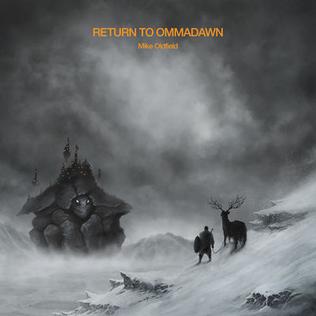
Return to Ommadawn is the twenty-sixth and final studio album by English musician and songwriter Mike Oldfield. It was released on 20 January 2017 on Virgin EMI Records and is the sequel to his 1975 album Ommadawn. The CD/DVD-Audio set contains a 5.1 surround sound mix of the album. Return to Ommadawn is the last studio album Oldfield released before the announcement of his retirement in 2023.




















